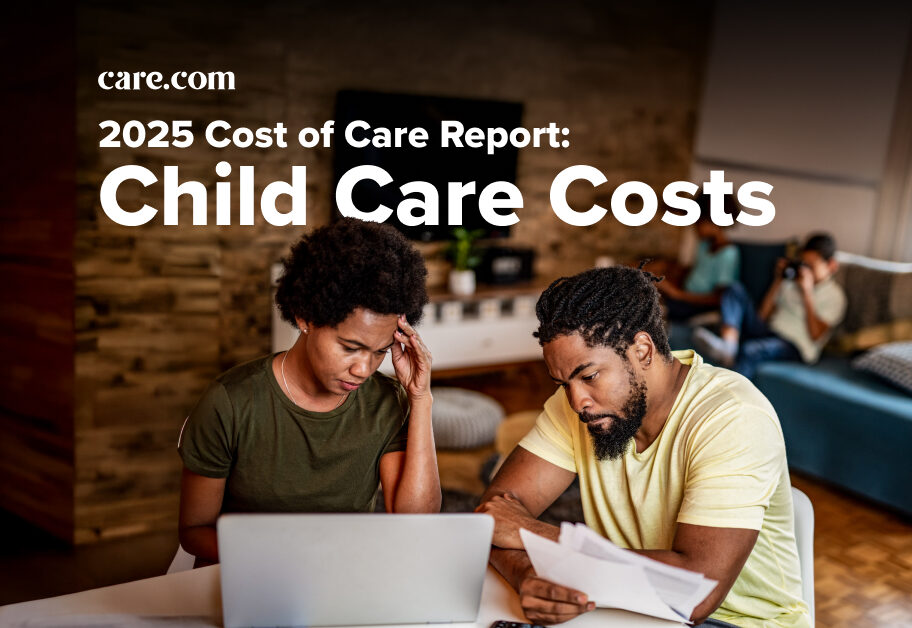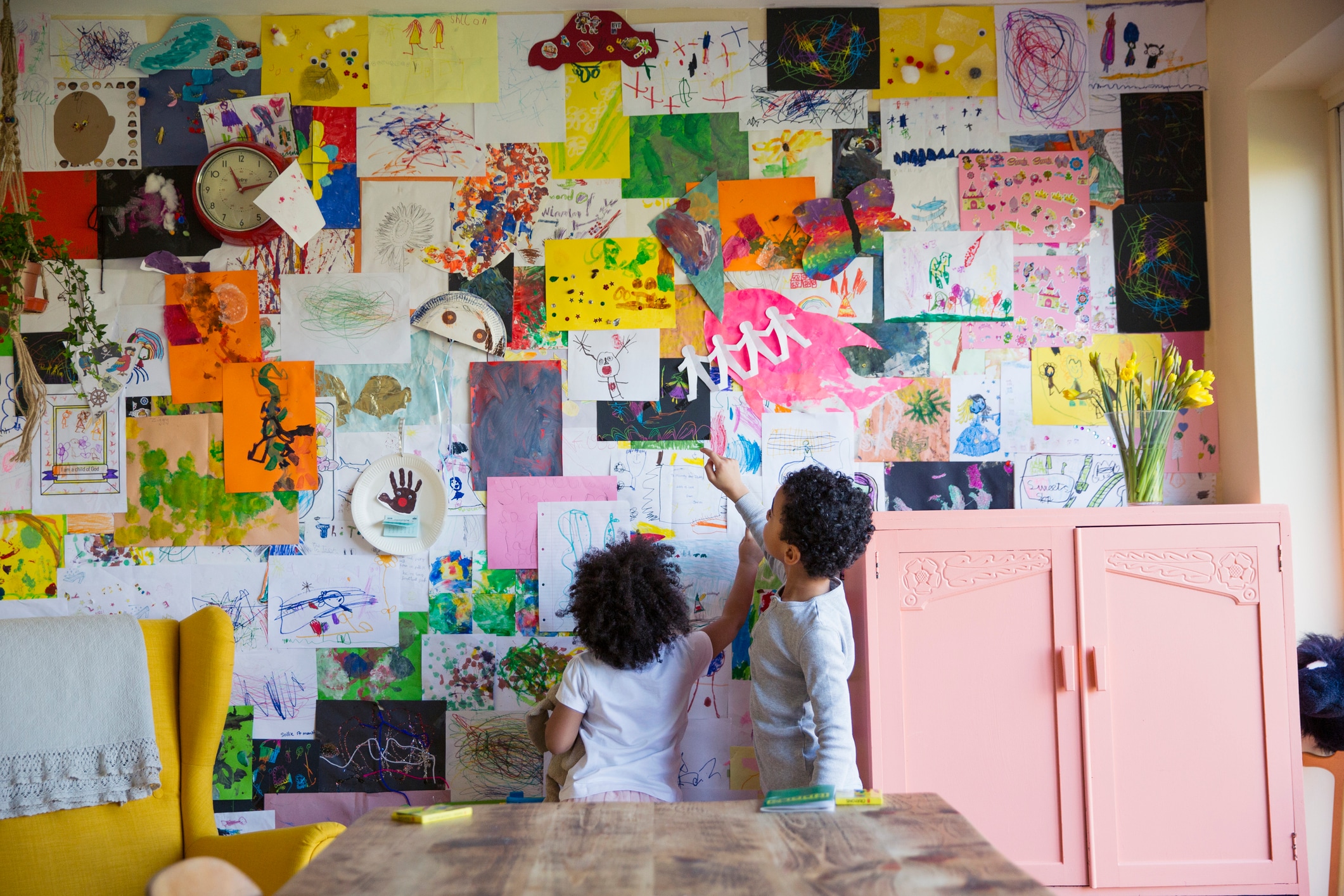In this article
One of the most common questions pregnant people are asked revolve around the sex of the baby. Curious, oftentimes well-meaning but not always well-informed friends and relatives will ask, “Is it a boy or a girl?” At that point, the parent-to-be might share an ultrasound image revealing a penis (or not). But the truth is, no matter how much “gender reveal” parties try to emphasize a gender binary, no one actually knows how a child identifies until long after they’ve been born and lived a while.
Gender refers to the socially constructed characteristics of individuals. While gender has often been viewed as a binary system and belief (consisting of boys/men and girls/women), many individuals transcend that construct. The fact is that many cultures have long understood that there can be numerous genders, and that many people identify as nonbinary —that is, they are neither a boy or a girl, but might be a combination of the two, or somewhere in between or somewhere completely outside the binary.
While some parents learned about gender diversity long ago, others will only begin to understand it if or when they begin to notice their own child going against gender norms. Perhaps you’ve found yourself here because your child has told you they don’t feel quite like a girl or quite like a boy, or they’ve even told you they are nonbinary. And if that’s the case, you likely have some questions.
To help guide you along on this journey, we asked several experts for their best tips and advice. Whether your child has come out already, or you’re simply trying to learn more in case your child does reveal they identify as nonbinary, these pointers can help you understand more about what this means so you can support your nonbinary child.
Key takeaways
- Children can understand and express their gender identity early, including identifying as nonbinary.
- Supportive parenting — through listening, learning and acceptance — promotes well-being.
- Rejection, on the other hand, can lead to serious mental health risks.
Can a child be nonbinary?
The short answer is yes! Just like a child can identify as a girl or a boy, they can also identify as nonbinary or trans. Once your child is old enough to speak and talk about themselves, they can begin to communicate whether they do feel like one gender or another.
“Children start to learn about binary gender categories as early as 2 years old,” says Steve Cisneros, a licensed psychologist in Dallas. “By 3 or 4 years old, kiddos have a sense of their gender identity that influences their gender expression.”
“Children start to learn about binary gender categories as early as 2 years old. By 3 or 4 years old, kiddos have a sense of their gender identity that influences their gender expression.”
— Steve Cisneros, licensed psychologist
You might be raising them with certain pronouns and to identify with a certain gender, and some kids will fully embrace this and feel that it is right for them. Others, however, may eventually let you know that this doesn’t actually feel like who they are — and according to Cisneros, they’re more likely to consider gender constructs and will be able to communicate this more the greater their gender-related vocabulary is.
“Caregivers’ openness to discussing gender and sex characteristics (e.g., haircuts, clothing and body parts) and media/social exposure influences gender identity and, therefore, gender expression to an extent,” he says.
Essentially, while we have no way to determine or decide one’s gender, the more we educate them about the differences and do so without judgment, the more likely children are to be honest about who they are.
How do I know if my child is nonbinary?
You might be wondering if there are other “clues” to help you figure out if you have a nonbinary child, short of them coming out to you. While that’s the surest way to know, there are some behaviors to look out for that might potentially indicate your child is gender diverse in some way.
While signs may vary by childhood development (things are different for a 4-year-old than a 12-year-old), one key element is persistence,” says Cisneros. He points to the ways in which children roleplay with gender and how kids who are gender non-conforming, trans* or nonbinary unwaveringly perceive themselves as a gender separate from their sex assigned at birth.
“There’s not a day when a child says, ‘I’m a boy acting like a girl.’ Instead, it is a consistent pattern (months, even years) of gender-nonconforming behavior, usually coupled with distress, sadness or anger when ‘corrected,’” he says. “Parents know because there’s usually a fight, and it’s not a kiddo being stubborn or not having had enough sleep; it’s their child taking it personally and doing so consistently.”
Rebecca Minor, licensed social worker and gender specialist, says she frequently refers clients to this list of potential “signs,” which includes:
- Wanting to pee in a way that is different than what you’d expect.
- Engaging in dress up more seriously than for play.
- Referring to themself as a different gender.
- Choosing to play characters in video games/pretend play that differ from their gender assigned at birth.
- Lack of interest in activities that are conventionally related to their assigned gender.
- Avoidance of dress clothes and more gendered garments.
- Disliking their name.
- Difficulty with or dislike of bathing/showering/personal hygiene.
- Positive reaction when people get confused over their gender.
Nonbinary parent Terri Laue says they started checking in with their eldest child about how they felt about their gender when they were around 4 and 5 years old.
“The options were pretty basic since they were so young. I’d just offer if they felt like a girl, boy, both or neither, so it’s been something they knew they could decide for a while,” says Laue. “When they were 6, they told me they didn’t feel like either. I told them the term for that is agender, and that’s how they have identified for the last four years.”
Laue says supporting their child through this gender identity journey has even helped Laue realize their own identity.
What do I do if my child is nonbinary?
“I think this really depends on the age of the child,” says Minor. “Parent’s can engage younger kids by either plainly bringing up the topic, watching a video or reading a book with nonbinary characters and then reflecting on it together.” She says parents can also model acceptance and provide opportunities to explore and play with gender and see what comes up.
“Little children don’t have language for how they identify, but they know what they like and what feels natural for them, and they know what it feels like when a parent or caregiver shames them,” says Caitlin Ryan, clinical social worker and director of the Family Acceptance Project at San Francisco State University. Ryan gives the example of a toddler boy who enjoys playing with dolls but who is then ridiculed or criticized by their parents, or even has the doll taken away.
“Little children don’t have language for how they identify, but they know what they like and what feels natural for them, and they know what it feels like when a parent or caregiver shames them.”
— Caitlin Ryan, clinical social worker and LGBTQ+ advocate
“Respectful communication is something that all parents can do to support their children, says Ryan. “Simply talking with your child and listening respectfully to understand how they identify, as they learn about gender identity, is a basic way that parents can support their gender diverse child.” Through her research at the Family Acceptance Project, Ryan notes that behavior such as this results in a reduction in mental health risks for the child, along with promotion of self-esteem and well-being.
Conversely, Ryan says her research has also found that when parents and caregivers pressure LGBTQ+ and gender-diverse children to change their gender expression, family conflicts as well as depression and suicidal behavior among these children increases. Simply put, fighting against a child’s gender identity and gender expression harms everyone while accepting and loving them for who they are benefits all.
“The best thing parents can do is listen, honor their child’s identity and follow their lead,” says Minor. “Give your child opportunities to play, explore and maybe meet other kids who are like them.”
“The best thing parents can do is listen, honor their child’s identity and follow their lead.”
— Rebecca Minor, licensed social worker and gender specialist
Minor also reminds parents to educate themselves about gender and to unpack their own complicated relationships with the subject. “For an older child or teen, it’s important that they don’t have to do all the emotional labor,” she says. Minor offers a free guide for parents whose nonbinary child has just come out to help aid in this process.
“My final piece of advice for parents of nonbinary children is to know that they are not alone — even if it feels like it,” says Cisneros. “There’s tons of information online if you search. Parents must find a support system, preferably of individuals who have gone through these experiences or are currently experiencing them.”
Cisneros points to support groups on Facebook and other forms of social media that can be helpful, especially in one’s local community.





